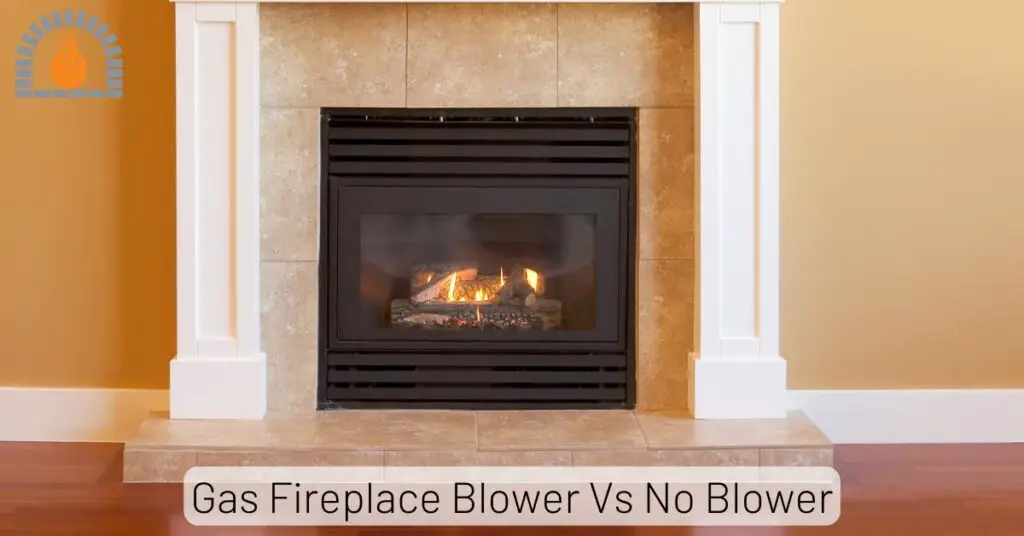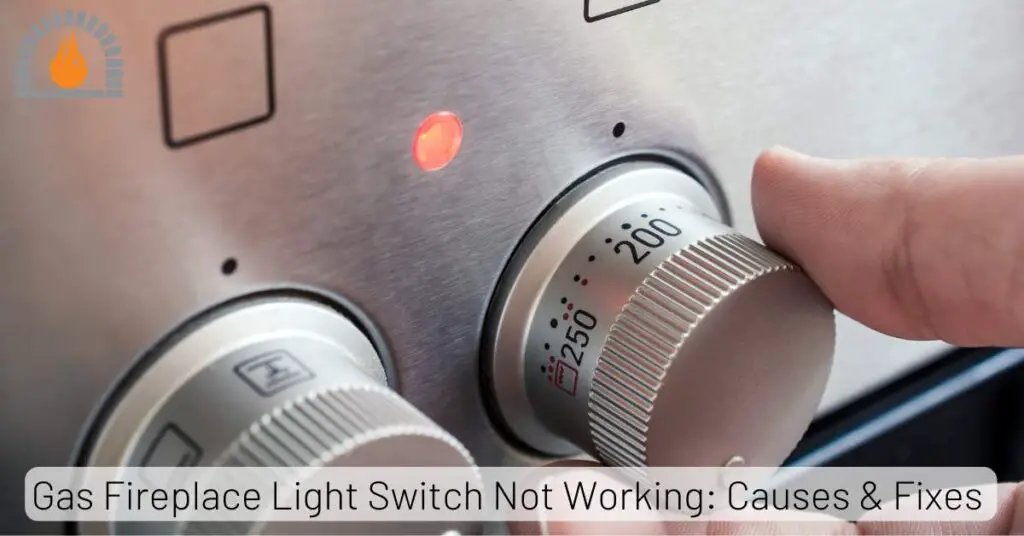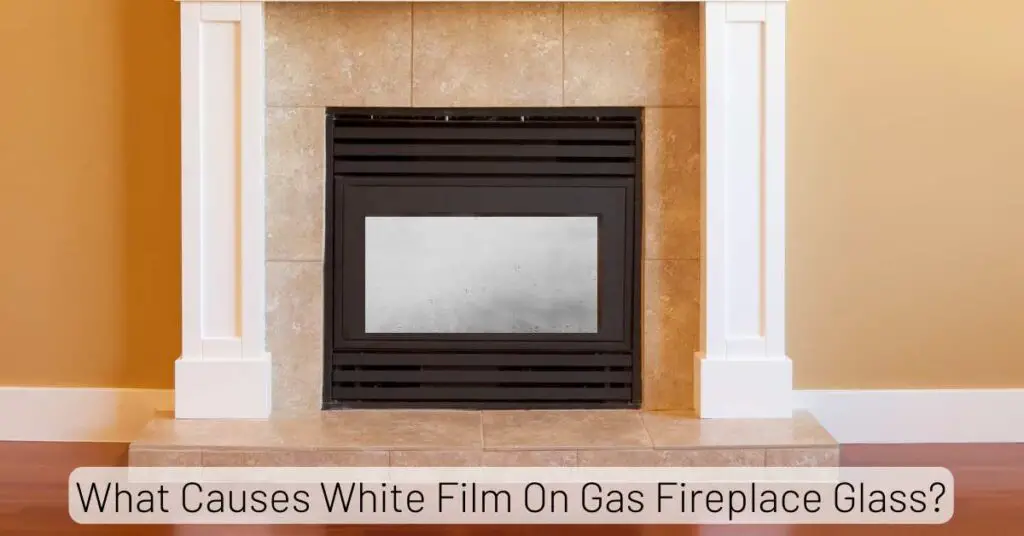Propane heaters provide an efficient and effective way to stay warm, especially in colder climates where temperatures can plunge. However indoor safety of propane heaters is essential.
Using propane heaters indoors carries potential risks, particularly if the proper safety protocols and legal requirements are not followed. Understanding the laws and guidelines for indoor use helps ensure safety while preventing accidental harm or legal consequences.
This article dives into the critical factors surrounding the safe and legal use of propane heaters indoors, covering potential risks, safety measures, and local law considerations that govern indoor propane heater use.
Key Takeaways
- Only use propane heaters labeled for indoor use with safety features like ODS and automatic shutoff.
- Laws on indoor propane heater use vary; check local codes to ensure compliance.
- Proper airflow is essential to prevent carbon monoxide buildup.
- Place CO detectors near heaters and sleeping areas to monitor air safety.
- Keep heaters 3 feet from walls, furniture, and flammable items.
- Clean, inspect, and store heaters safely; disconnect propane tanks when not in use.
- Know what to do if there’s a gas smell or malfunction.
- Inform your insurance provider about indoor propane heater use for proper coverage.
Is it Safe to Use a Propane Heater Indoors?
Using a propane heater indoors can be safe if proper precautions and safety measures are followed. To safely use a propane heater indoors, look for models specifically designed for indoor use, equipped with safety features like an Oxygen Depletion Sensor (ODS) and automatic shutoff mechanisms.
Ensure proper ventilation and install CO detectors, as inadequate ventilation can lead to dangerous CO buildup. When used correctly and in compliance with safety guidelines, propane heaters can provide efficient indoor heating without compromising safety.
According to the National Fire Protection Association (NFPA), heating equipment is the second leading cause of home fires, accounting for approximately 14% of home fires annually.
Carbon monoxide (CO) poisoning is another risk; the Centers for Disease Control and Prevention (CDC) reports that over 400 Americans die each year from accidental CO poisoning, often related to fuel-burning appliances, including propane heaters.
Premium Pick
Mr Heater 4000- 18000 BTU Portable Propane Heater
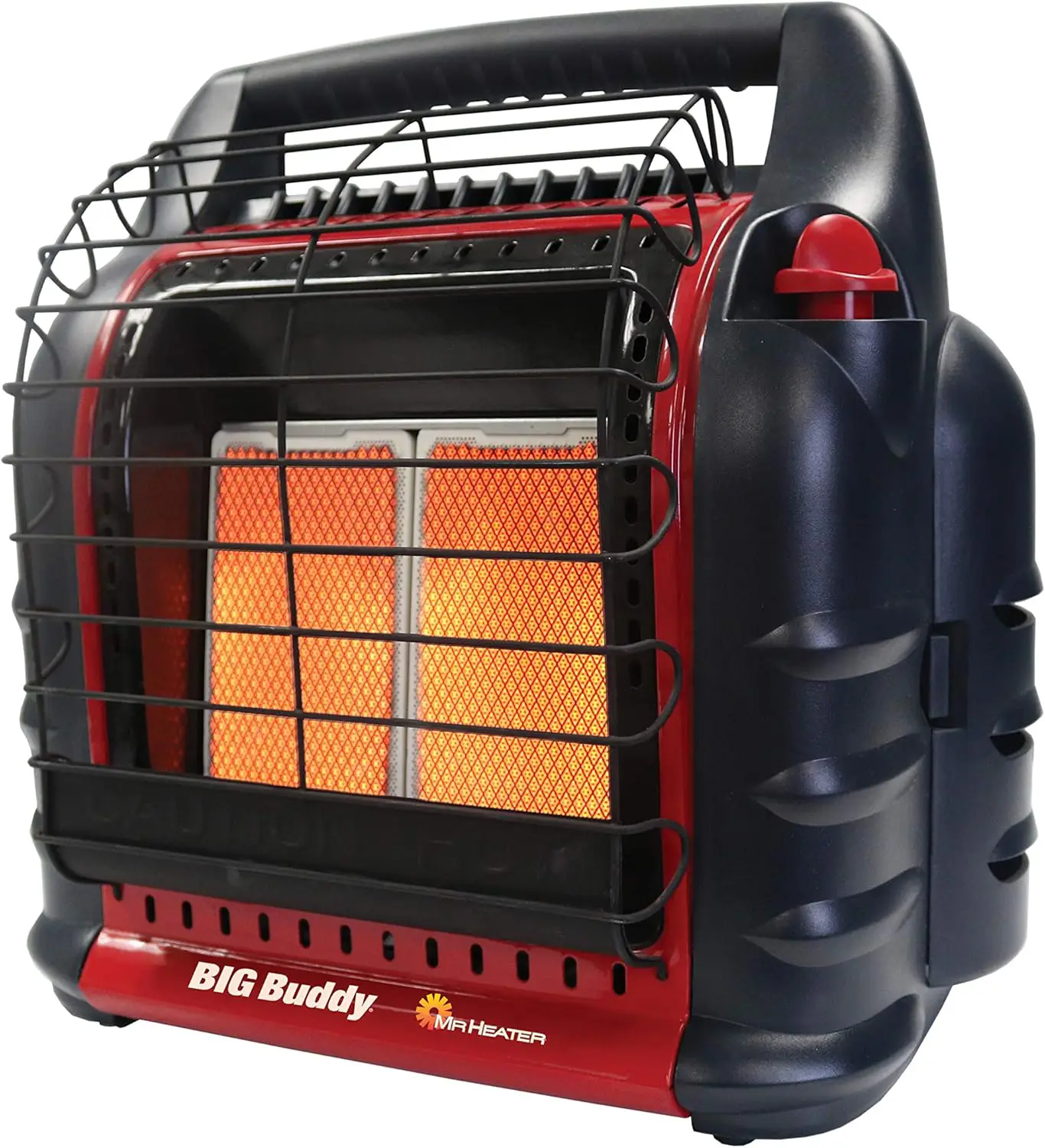
Best Value
Mr. Heater Vent Free 30,000 BTU Propane Space Heater
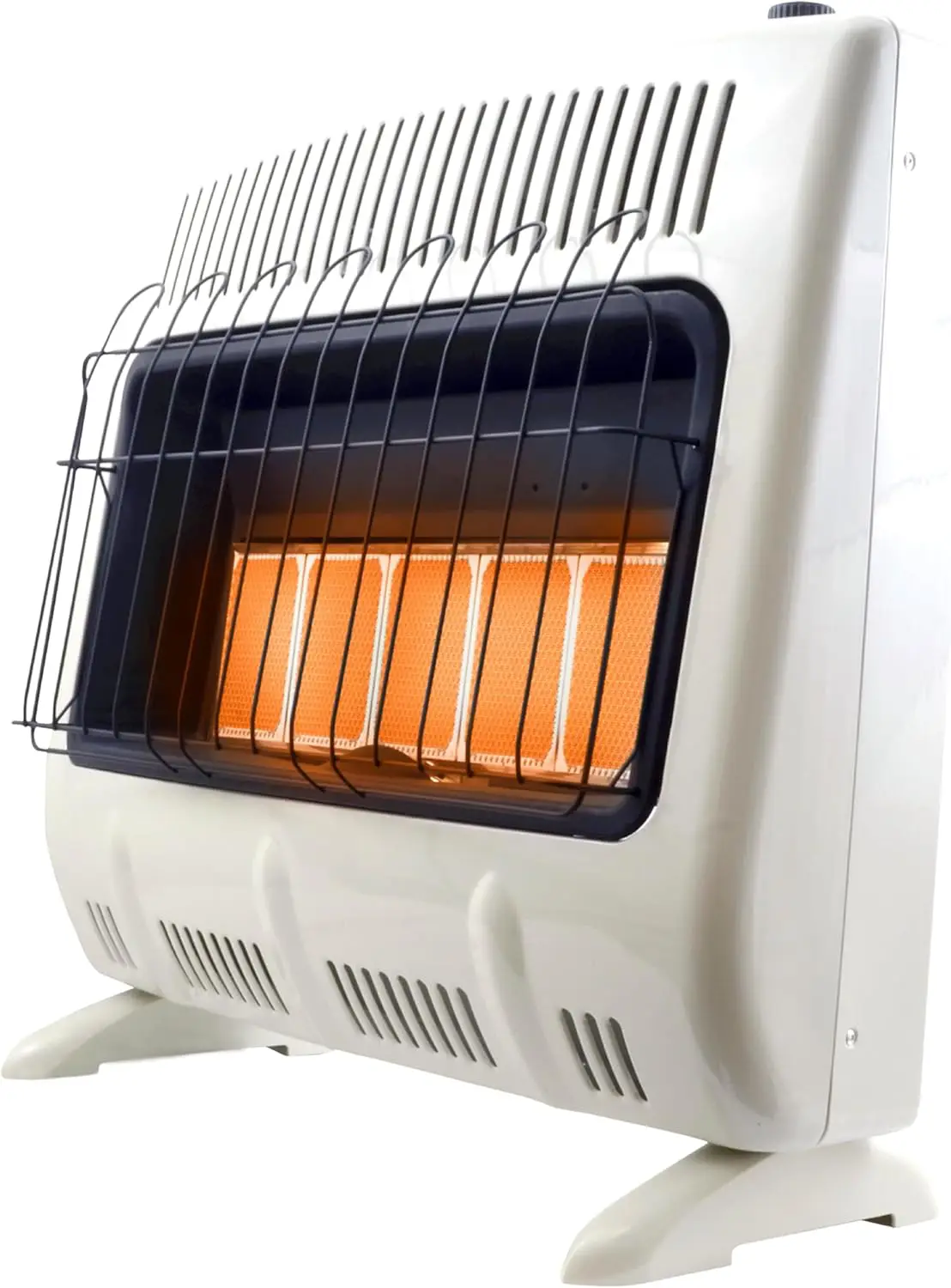
Indoor Safety of Propane Heaters
1. Choose the Right Heater
Only use propane heaters specifically designed for indoor use. These models are equipped with safety features such as oxygen depletion sensors and automatic shut-off mechanisms to prevent accidents when oxygen levels drop too low.
2. Ventilation Requirements
For using propane heater safely inside adequate ventilation is paramount when using propane heaters indoors, as it helps to dissipate dangerous gases and ensures fresh air circulation.
General ventilation guidelines include:
Opening windows and doors can improve airflow, helping reduce the concentration of gases like carbon monoxide.
In more confined spaces, fans or exhaust systems might be necessary to ensure the air remains breathable.
Failing to follow ventilation requirements can lead to an accumulation of harmful gases, making it essential to ventilate effectively, even if local regulations don’t mandate it.
3. Carbon Monoxide Detectors and Safety Measures
For indoor safety of propane heaters one of the essential safety tools when using a propane heater inside is a carbon monoxide (CO) detector. Carbon monoxide is an odorless, colorless gas that can accumulate quickly without noticeable warning, leading to serious health risks or even fatalities.
To safeguard against CO buildup, these detectors are an absolute necessity:
- Role of CO Detectors: CO detectors sound an alarm when dangerous CO levels are detected, allowing occupants to address the issue or evacuate if needed. In indoor settings with propane heaters, these detectors provide critical, real-time monitoring.
- Placement of CO Detectors: For optimal safety, place CO detectors on each level of the home and particularly close to rooms where people sleep or spend significant time. CO detectors should be located at least 5-15 feet from heating equipment, in line with manufacturer guidelines, to ensure accurate readings.
- Maintenance of CO Detectors: Regularly test CO detectors, ideally once a month, and replace batteries as needed to maintain their functionality. Many detectors have a lifespan of 5-7 years and should be replaced accordingly.
Installing CO detectors in every room with a propane heater and ensuring they are fully functional can be a literal lifesaver. Some laws even mandate CO detectors for households with fuel-burning appliances to prevent accidental poisoning.
4. Placement and Clearance Guidelines
For indoor safety of propane heater where you place a propane heater is just as important as how you use it. Incorrect placement can increase fire risks and reduce the heater’s effectiveness. Here are key considerations:
Maintain a minimum of 3-4 feet of clearance around the heater, as recommended by the NFPA. This clearance helps prevent nearby objects, especially flammable items, from overheating or catching fire.
Keep propane heaters away from curtains, paper products, wood, and other flammable items. Placing a propane heater near combustible materials can quickly turn a minor mishap into a fire hazard.
Always place the heater on a stable, non-flammable surface, such as concrete or tile, rather than carpets or rugs that could ignite from prolonged exposure to heat.
Correct placement and clearance can significantly reduce the chances of accidents, making this a crucial aspect of safe indoor propane heater use.
5. Role of Oxygen Depletion Sensors (ODS) in Propane Heaters
Many modern propane heaters come equipped with an oxygen depletion sensor (ODS), which is a critical safety feature designed to shut off the heater if oxygen levels fall below safe limits. Here’s why they matter:
An ODS detects oxygen levels in the room. When the sensor determines that oxygen levels have fallen to a specific threshold (typically below 18%), it automatically shuts off the heater to prevent suffocation or poisoning.
Since propane heaters consume oxygen, a lack of ventilation can cause oxygen depletion. An ODS ensures that the heater won’t operate in potentially hazardous conditions, which is essential for indoor environments.
Some states and regions require all propane heaters used indoors to have an ODS as an additional safety measure. Checking for ODS compliance can help users align with local regulations and reduce risks associated with oxygen depletion.
Propane Heaters and Their Functions
Propane heaters are portable devices that use propane gas as fuel to generate heat. These heaters are highly effective for spaces where traditional heating might be insufficient or costly, such as in garages or workshops.
Propane heaters are available in several types, each offering unique functionalities.
Propane indoor heaters are popular for their portability, efficiency, and quick heating capabilities. However, due to the inherent risks associated with burning propane in confined spaces, it’s essential to ensure that these heaters comply with local safety laws and regulations.
Potential Risks of Using Propane Heaters Indoors
-
Carbon Monoxide (CO) Poisoning: Propane heaters emit CO, a potentially lethal gas when inhaled in large amounts. Unlike vented heaters, unvented propane heaters require more safety precautions since they release combustion gases directly into the room.
-
Fire Hazards: Propane heaters can be a source of fire if not correctly handled. The open flame or radiant heat can ignite nearby flammable materials, increasing fire risk, especially in poorly ventilated spaces.
-
Oxygen Depletion: Since propane heaters consume oxygen as they burn, using them in small or confined areas can deplete oxygen levels, leading to serious health risks like hypoxia.
Local Laws and Regulations on Indoor Propane Heater Use
The legal requirements for indoor propane heater use vary widely depending on location. Local building codes often dictate the types of heaters permitted for indoor use, with some regions requiring specific certifications or limitations on usage based on safety risks.
Here are general rules that apply:
-
Compliance with Local Codes: Each city or county may have unique rules for propane heater usage indoors. For example, some municipalities may ban unvented propane heaters entirely due to the risks they pose.
-
Permit Requirements: In certain locations, using propane heaters indoors may require a permit or regular inspection by a certified professional.
-
Penalties for Non-Compliance: Failing to comply with local laws could result in fines, penalties, or a restriction on the use of propane heaters in the future. It’s crucial to be familiar with the regulations in your area before using a propane heater indoors.
Key Safety Standards Set by National Organizations
Several national organizations provide safety standards and guidelines that help regulate propane heater use across the U.S. Among the most prominent are:
OSHA (Occupational Safety and Health Administration):
OSHA enforces workplace safety standards that include ventilation and heating requirements when using propane heaters in commercial settings.
NFPA (National Fire Protection Association):
NFPA sets fire safety standards that outline requirements for safe propane heater operation, placement, and handling to prevent accidental fires.
UL (Underwriters Laboratories) Certification:
Propane heaters that bear the UL certification have undergone rigorous testing to ensure they meet safety standards, especially critical for devices used indoors.
Proper Storage and Maintenance of Propane Heaters
Storing and maintaining propane heaters properly extends their lifespan and enhances safety. Routine maintenance and careful storage help reduce risks of leaks, malfunctions, and unexpected hazards:
-
Store propane heaters in a dry, cool place, away from direct sunlight and flammable materials. Always disconnect the propane tank and ensure that any valves or controls are in the off position before storing.
-
Regularly inspect the heater for any visible signs of wear or damage, such as rust, loose fittings, or worn-out hoses. Cleaning the heater to remove dust or debris from burners and fans helps maintain efficient combustion.
-
Consider an annual inspection by a certified technician, especially if the heater is used frequently. A professional can assess whether the device remains in safe, working condition and recommend repairs or replacements if necessary.
Emergency Preparedness While Using Propane Heaters
Even with all necessary precautions, preparing for potential emergencies is wise. Knowing how to respond to signs of heater malfunction or hazards can protect occupants from harm:
Common signs include strange odors, unusually loud sounds, or visible signs of soot or smoke. Discontinue use immediately if any of these indicators are present.
If you suspect a propane leak, turn off the heater and the propane supply. Open doors and windows to ventilate the area and avoid any actions that could spark a fire (e.g., using electric switches). Evacuate the area if necessary.
In case of a fire or suspected gas leak that cannot be contained, call emergency services. Many local fire departments have protocols for propane-related incidents and can provide rapid, specialized assistance.
Being prepared for potential emergencies ensures that propane heater use remains a safe and controlled part of indoor heating.
Regulations on Indoor vs. Commercial Spaces
The regulations governing propane heater use often differ between residential and commercial settings, largely due to variations in occupancy and building codes:
Residential Regulations: Homeowners may face more lenient regulations but should still follow local laws regarding indoor fuel use and ventilation. Additionally, residential heaters often require safety features like CO detectors and ODS systems.
Commercial and Industrial Regulations: Commercial spaces, such as warehouses and workshops, are typically subject to stricter regulations. OSHA may mandate specific ventilation systems and restrict unvented heaters in workplaces to prevent air quality issues.
Special Rules for Public Spaces: Propane heaters in public or semi-public areas may need additional safety features and frequent inspections. These environments typically have higher foot traffic, requiring stricter safety oversight.
Insurance Implications of Indoor Propane Heater Use
Indoor propane heater use can impact homeowners’ and commercial insurance policies. In some cases, using these heaters without proper disclosure or safety measures can affect coverage:
Some insurers require that homeowners inform them if they are using propane heaters indoors. Failing to disclose heater use could void coverage in case of an accident.
Insurers may request documentation showing the heater meets local safety standards and has been professionally inspected if required by local regulations.
If an accident occurs, insurers will evaluate whether the propane heater was in compliance with safety standards. Non-compliance could lead to denial of claims, especially if local laws were ignored.
Keeping the insurer informed and adhering to safety regulations can prevent unexpected issues with coverage.
Choosing the Right Propane Heater for Indoor Use
Selecting the correct propane heater is vital to ensure safety, efficiency, and legal compliance. Factors to consider include:
-
BTU Output: The British Thermal Unit (BTU) output should align with the size of the indoor area. A larger space requires a heater with a higher BTU rating, but excessive BTUs in a small room can create risks.
-
Ventilation and Safety Features: Choose a heater with built-in safety features, including ODS, automatic shutoff, and CO detectors. For unvented heaters, prioritize models with rigorous safety certifications, such as UL ratings.
-
Size and Placement Suitability: Ensure that the heater is appropriately sized and designed for indoor use. Many models specify whether they are suitable for enclosed spaces, so double-check the manufacturer’s recommendations.
FAQs
Can I use any propane heater indoors, or are there specific models for indoor use?
Not all propane heaters are suitable for indoor use. Look for models specifically labeled for indoor settings and ensure they have safety features like oxygen depletion sensors (ODS) and CO detectors.
Is it mandatory to have a carbon monoxide detector if I use a propane heater indoors?
While local laws vary, having a CO detector is strongly recommended and required in some areas. CO detectors significantly enhance safety by alerting users to dangerous gas levels.
How often should propane heaters be inspected for safety?
Ideally, inspect your propane heater before each use. Regular professional maintenance and inspection, at least annually, can help ensure the heater remains in safe, working condition.
Are vent-free propane heaters legal in all states?
No, some states and cities have restrictions or bans on vent-free propane heaters due to the risks associated with indoor emissions. Always check local laws before use.
Can I place a propane heater close to walls or furniture?
No, propane heaters should maintain at least 3 feet of clearance from walls, furniture, and any flammable objects to minimize fire risks and ensure safe operation.
Affiliate Disclosure: Fireplaceadviser.com is a participant in the Amazon Services LLC Associates Program. We may earn a commission when you click on certain links on this site and purchase.

Hello!! I am Jamal Khan. I often fix my home electric heaters and gas stove problems and research the common issues in the heating units to improve my knowledge and expertise. The aim of establishing fireplaceadviser.com is to share my expertise and knowledge with my audience.








